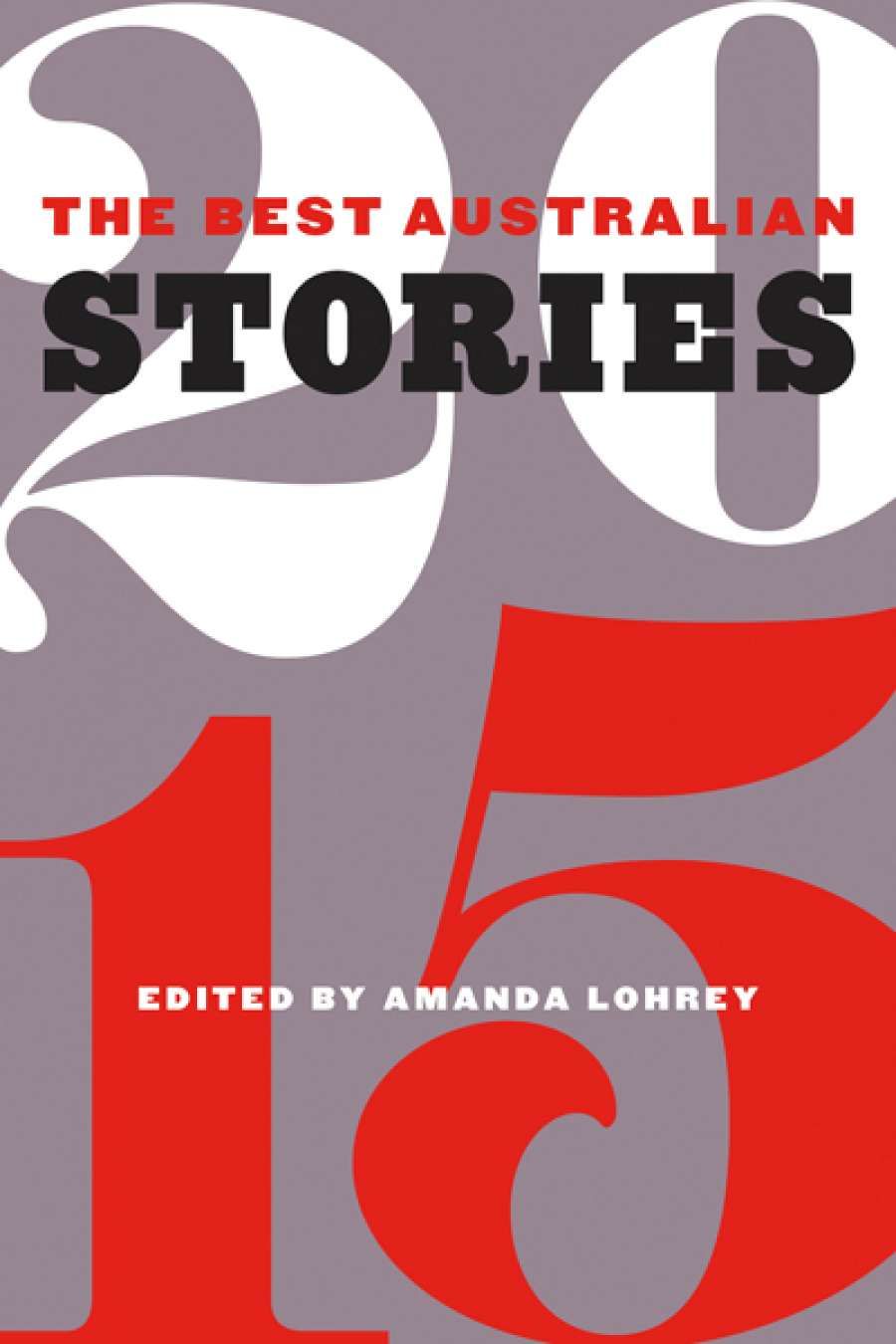
- Free Article: No
- Contents Category: Anthology
- Custom Article Title: Josephine Taylor reviews 'The Best Australian Stories 2015' edited by Amanda Lohrey
- Review Article: Yes
- Online Only: No
- Book 1 Title: The Best Australian Stories 2015
- Book 1 Biblio: Black Inc., $29.99 pb, 240 pp, 9781863957786
The twenty fictions, apart from Corbett's short piece, are of a standard length – the longest, Goldie Goldbloom's 'The Pilgrim's Way', is twenty pages – and the majority of them are realist stories. There are, however, notable exceptions. In Colin Oehring's wicked 'Little Toki', magic realism irrupts within a conventional family-holiday narrative. Redhouse's story verges on the fabulous with its lyrical venture into the territory of the brain, memory, and identity, while Gay Lynch's 'The Abduction of Ganymede' skilfully evokes and subverts received mythologies. Lynch's tale is also notable for its second-person point of view, which is sustained without strain or artifice.
It is hard to beat a good realist narrative that unfolds slowly, accruing layers of nuance and meaning, and most of the stories fit this bill nicely. In Cate Kennedy's 'Puppet Show', the protagonist's honeymoon in Bali prompts a re-evaluation of the spoils of culture and marriage; the repeated phrase 'This is it' acquires a different resonance. In Goldbloom's story, pivotal moments in familial relationships are at once droll and achingly sad. Ambiguity and complexity are further developed through Goldbloom's skilful use of prolepsis, the effect not unlike that achieved by Jennifer Egan in the fabulous A Visit from the Goon Squad (2010).
'All the stories in this book throw complex individual narratives into relief, suggesting diversity and difference within and between cultures'
Stories reflect the many cultures that are now embraced by the descriptor 'Australian', but do not shy away from presenting contradictory elements of nationalism and 'mateship': 'I can't have that, mate', says Rohan's manager in Balli Kaur Jaswal's 'Better Things' when the protagonist requests daylight-only shifts; and Rohan and his flatmate Sarjeet dispute who are the most racist – 'whites' or 'Australian-born Indians'. The world might seem to offer, in comparison, a sense of self that is inclusive and fluid, but in Jo Lennan's 'How Is Your Great Life?' such global citizenship also complicates how we locate and value ourselves. More hearteningly, all the stories in this book throw complex individual narratives into relief, suggesting diversity and difference within and between cultures, usually without obvious judgement – see, for instance, Smith's 'Manyuk'. They also present human emotions – regret, joy, sorrow – that transcend culture, suggesting universal elements of the human experience.
One of the features of short fiction that Peter Cowan, a writer who excelled in this form, isolated as giving the short story its significance is 'the degree of implication possible' (1981). It is the implied that lingers after reading these narratives; subtly unsettling situations that are registered most powerfully. O'Neill's story is schematic in form and reflexive in substance, yet grounded in emotional verity; the double dealing with 'complication' is both clever and moving. Jennifer Down's 'Aokigahara' – worthy recipient of the 2014 ABR Elizabeth Jolley Short Story Prize – is cinematic in style: the narrative develops in one long 'take' interspersed with flashbacks, an approach that immerses the reader in a sensitively realised subjectivity. Scott's story depicts character through vignettes, allowing the brutal montage to speak for itself. This piece also features one of the more extravagant and memorable images of the collection: the biographical–fictive Picasso, displaying 'his famous sack and the monstrous balls that plot within'. Most compelling of the more experimental inclusions is Koh's piece of speculative fiction. Read this story slowly to absorb the fine satire and the fierce artistic act of transgression. It may speak to many readers.


Comments powered by CComment